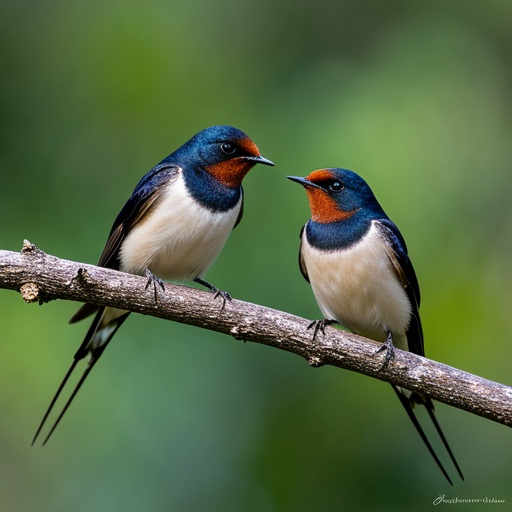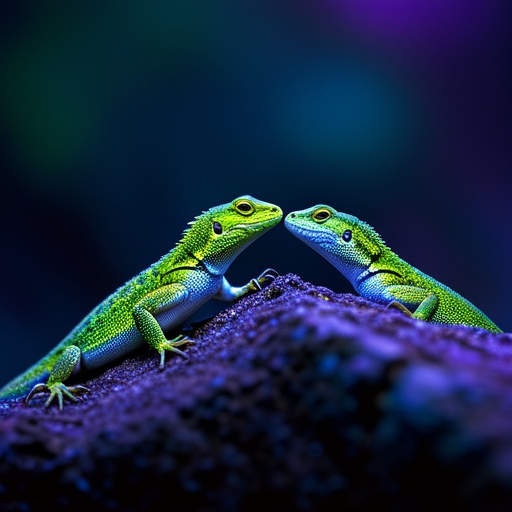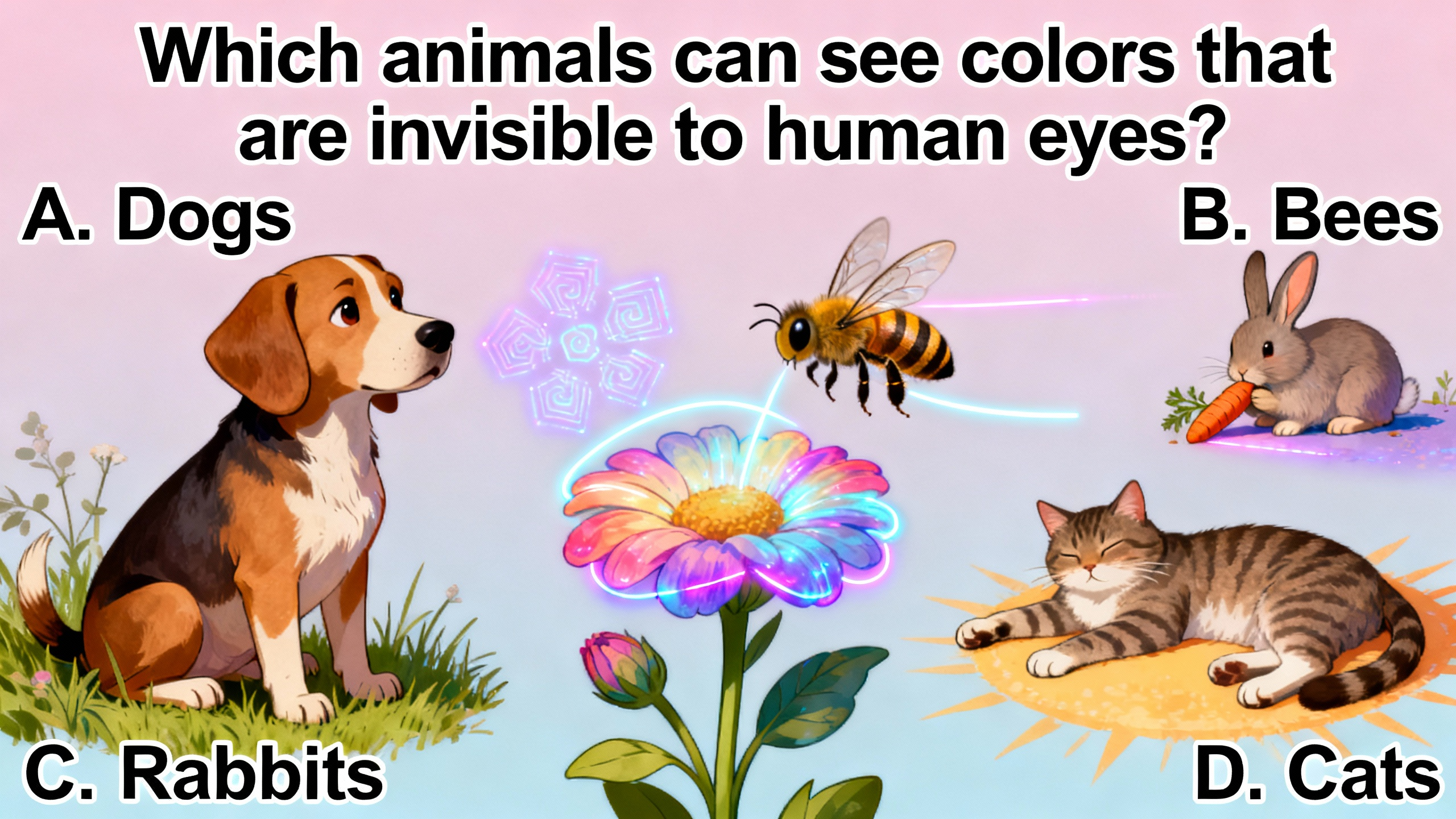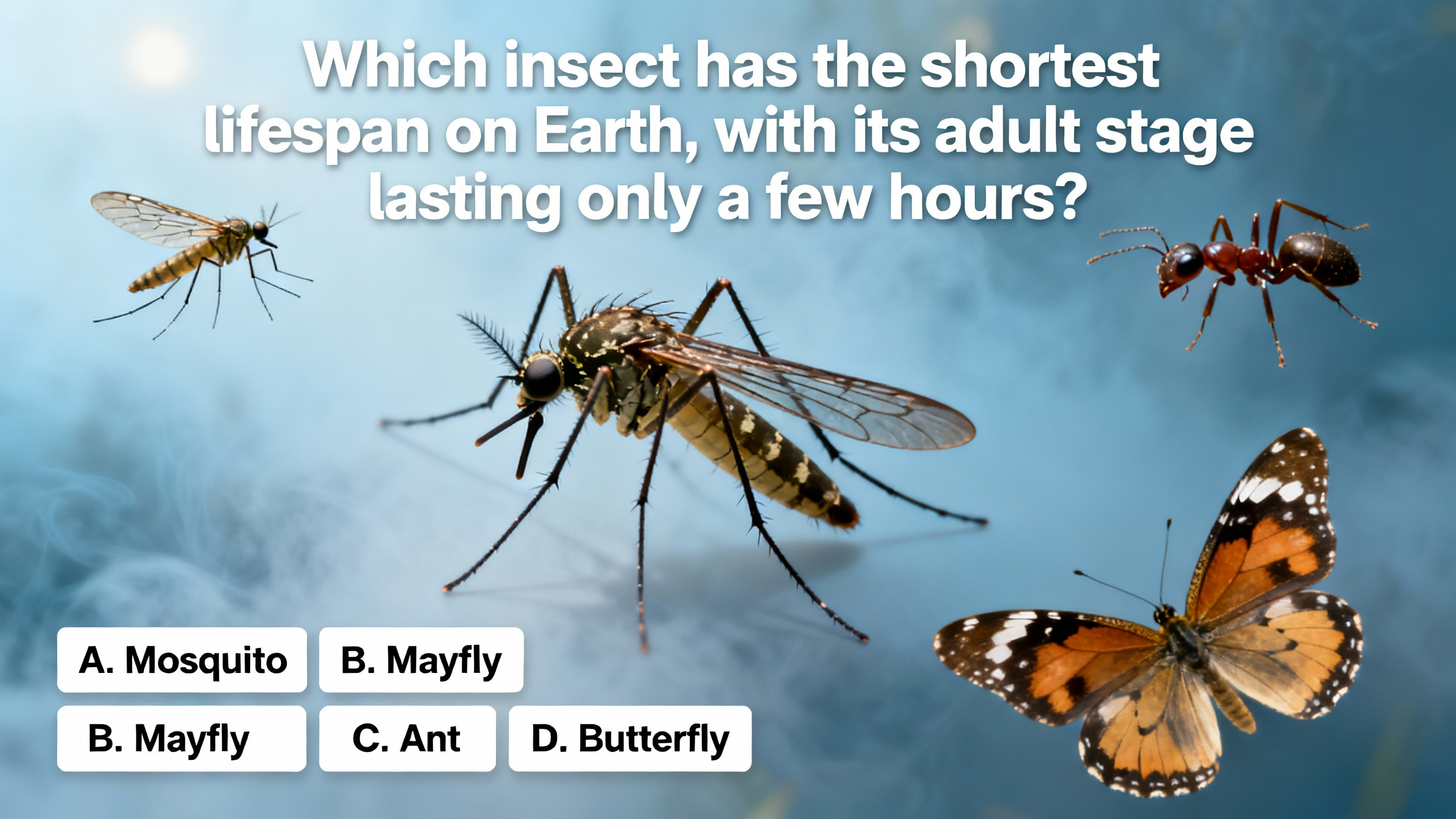Animals That Can See Colors Invisible to Humans
 There are several animals that can see colors invisible to human eyes. One prominent group is insects, such as bees. Bees can perceive ultraviolet light, which is beyond the human visible spectrum. Ultraviolet patterns on flowers act as nectar guides, helping bees locate the nectar and pollen more efficiently. These patterns are often invisible to humans but are highly distinct to bees. For example, some flowers may appear plain to us, but under ultraviolet light, they have complex markings that lead the bees straight to the reward. This ability gives bees a significant advantage in foraging and pollination, as they can quickly identify the most productive flowers.
There are several animals that can see colors invisible to human eyes. One prominent group is insects, such as bees. Bees can perceive ultraviolet light, which is beyond the human visible spectrum. Ultraviolet patterns on flowers act as nectar guides, helping bees locate the nectar and pollen more efficiently. These patterns are often invisible to humans but are highly distinct to bees. For example, some flowers may appear plain to us, but under ultraviolet light, they have complex markings that lead the bees straight to the reward. This ability gives bees a significant advantage in foraging and pollination, as they can quickly identify the most productive flowers.
 Another group of animals with this unique visual ability is birds. Many bird species can see ultraviolet light as well. This is particularly useful in various aspects of their lives, including mate selection and foraging. In mate selection, the ultraviolet reflectance of feathers can play a crucial role. Some male birds have feathers that reflect ultraviolet light in a way that is attractive to females, which is not detectable by human eyes. In terms of foraging, birds can spot the ultraviolet - marked fruits and prey. For instance, berries may have ultraviolet patterns that make them stand out against the foliage, allowing birds to easily find food sources.
Another group of animals with this unique visual ability is birds. Many bird species can see ultraviolet light as well. This is particularly useful in various aspects of their lives, including mate selection and foraging. In mate selection, the ultraviolet reflectance of feathers can play a crucial role. Some male birds have feathers that reflect ultraviolet light in a way that is attractive to females, which is not detectable by human eyes. In terms of foraging, birds can spot the ultraviolet - marked fruits and prey. For instance, berries may have ultraviolet patterns that make them stand out against the foliage, allowing birds to easily find food sources.
 Reptiles also possess the ability to see into the ultraviolet spectrum. Some lizards, for example, use ultraviolet vision for communication and hunting. They can detect ultraviolet signals on the bodies of other lizards, which may convey information about their health, dominance, or reproductive status. When it comes to hunting, ultraviolet - reflecting prey can be more easily spotted by these lizards, giving them an edge in capturing food in their natural habitats. Overall, these animals' ability to see colors invisible to humans provides them with distinct advantages in survival, reproduction, and daily activities.
Reptiles also possess the ability to see into the ultraviolet spectrum. Some lizards, for example, use ultraviolet vision for communication and hunting. They can detect ultraviolet signals on the bodies of other lizards, which may convey information about their health, dominance, or reproductive status. When it comes to hunting, ultraviolet - reflecting prey can be more easily spotted by these lizards, giving them an edge in capturing food in their natural habitats. Overall, these animals' ability to see colors invisible to humans provides them with distinct advantages in survival, reproduction, and daily activities.










